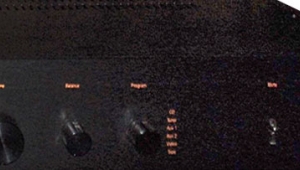| Columns Retired Columns & Blogs |
I was a CJ Dealer ( including the Premier Stuff ). I stocked these PV4s thinking they would sell, ( they didn't ).
I also carried and Sold Art Ferris's Audible Illusions Modulus, which outperformed all the CJ Line ( up to the Premier Pre ) because Art carefully hand-selected the Tubes. At the Time I didn't realize how important Tube selection can be but Art Ferris did.
I came to love and rely on that AI $500 Pre-amp. for most of my Tube set-ups.
However, the Electrocompaniet PreAmpliwire was more musical.
If I happen to come across a PV4, I'll buy it to see if Keven Deal could supply some "nice glass" that might "wake-up" the little amp.
But...
I have a theory that "Phono" Preamps will never sound as good as Preamps designed for use without high levels of gain ( for MC/MM phono carts ), built-in RIAA equalizers and Sub-Sonic filter limiters ( for rumble elimination ).
Plus...
PreAmps designed for Digital will be much quieter, have higher dynamic range and less to significantly less complexity accompanied by significantly better Power Supplies.
Class D is suuuuuuuppppppppeeerrr good now-a-days!
Old Tube PreAmps are still sellable, eBay will fetch a darn nice price for a Closet dweller PV4.






































